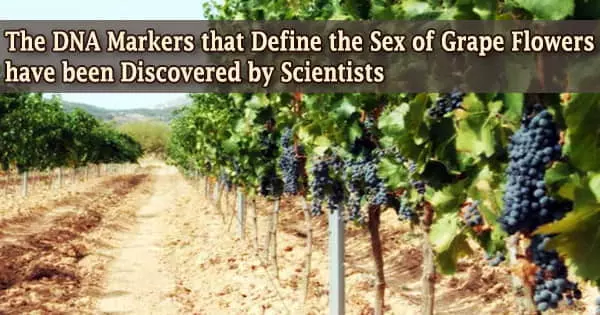Wines and table grapes exist as a result of a genetic exchange that occurred just twice in nature in the last 6 million years. Breeding has been a gamble since the introduction of the grapevine 8,000 years ago.
It takes two to four years for breeders to learn whether they have the genetic components for the perfect bloom when today’s producers develop new types in the hopes of producing better-tasting and disease-resistant grapes.
Females generate sterile pollen but do not set fruit. Males have pollen-gathering stamens but no fruit. The ideal flower, on the other hand, carries both sex genes and has the ability to self-pollinate. Researchers employ these hermaphroditic variants for more cross-breeding because they produce larger and better-tasting fruit clusters.
Scientists from Cornell University and the University of California, Davis have now collaborated to find the DNA markers that distinguish grape flower sex.
They also discovered the ideal flower’s genetic roots in the process. “Multiple Independent Recombinations Led to Hermaphroditism in Grapevine,” their publication in the Proceedings of the National Academy of Sciences, was published on 13th April 2021.
The more grape DNA markers are identified, the more breeders can advance the wine and grape industry. Modern genetic sequencing technologies and multi-institutional research collaborations are key to making better grapes available to growers.
Bruce Reisch
“This is the first genomic evidence that grapevine flower sex has multiple independent origins,” said Jason Londo, corresponding author on the paper and a research geneticist in the USDA-Agricultural Research Service (USDA-ARS) Grape Genetics Unit, located at Cornell AgriTech. Londo is also an adjunct associate professor of horticulture at the College of Agriculture and Life Sciences School of Integrative Plant Science (SIPS).
“This study is important to breeding and production because we designed genetic markers to tell you what exact flower sex signature every vine has,” Londo said, “so breeders can choose to keep only the combinations they want for the future.”
Most cultivated grapevines today are hermaphroditic, although all wild Vitis species have only male or female blooms. The capacity to screen seedlings for flower sex has become more crucial as breeders try to transfer disease-resistance genes from wild species into new breeding lines.
Because grape sex can’t be identified solely by looking at the seeds, breeders invest a lot of time and money producing vines only to abandon them several years later when they discover they’re single-sex kinds.
The researchers looked at the DNA sequences of hundreds of wild and domesticated grapevine genomes to find the areas that differentiate male, female, and hermaphroditic species. They were able to link the current hermaphroditic DNA to two independent recombination events that took place between 6 million and 8,000 years ago.
Londo theorizes that ancient viticulturists came upon these high-yielding vines and harvested seeds or cuttings for their own uses, effectively freezing the hermaphroditic flower feature in today’s cultivated grapevines.
Many wine grapes can be traced back to one of two gene pools: the first or second event. The initial gene pool includes cultivars including cabernet franc, cabernet sauvignon, merlot, and Thompson seedless. From the second gene pool come pinot noir, sauvignon blanc, and gamay noir.
Chardonnay and Riesling are distinct in that they include genes from both events. This, according to Londo, shows that ancient viticulturists crossed grapes between the two gene pools, resulting in some of the most important varietals of today.
Documenting the genetic markers for identifying male, female, and ideal flower types can help accelerate cultivar creation and cut breeding program expenditures in the long run.
“The more grape DNA markers are identified, the more breeders can advance the wine and grape industry,” said Bruce Reisch, co-author and professor in both the Horticulture and the Plant Breeding and Genetics sections of SIPS.
“Modern genetic sequencing technologies and multi-institutional research collaborations are key to making better grapes available to growers.”





